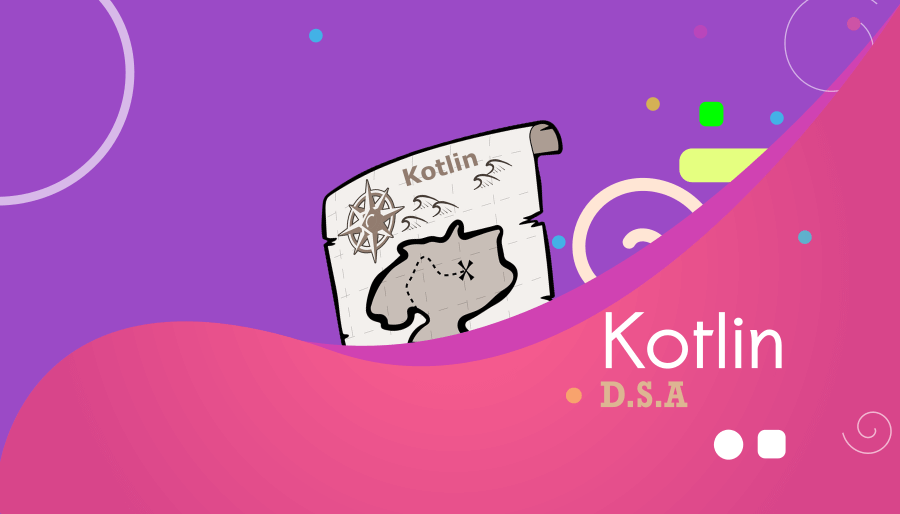DSA with Kotlin: Where should I start off ?
Learning programming is essential for all developers, but mastering Data Structures and Algorithms (DSA) constitutes a long-term learning process that can be highly beneficial, especially for those extensively involved in complex computer science tasks. Moreover, the backbone of a programmer lies not in knowing numerous programming languages, but in mastering a single language while possessing robust skills in data structures and algorithms. Kotlin is one of the best languages for those who wish to start their DSA journey as a beginner. How to start DSA with Kotlin? Let’s explore.

Step 1: DSA in Kotlin : Learn the Basics
The learning curve for Kotlin is’t as steep as Java , making it easier for beginners to grasp the essence of the language within a month or even just a few weeks. Start by acquainting yourself with fundamental Kotlin concepts such as variables, functions, classes, and lists.
Step 2: Understanding Data Structures
Learn how to create, manipulate, and traverse arrays in Kotlin.
Explore Kotlin’s List, MutableList, and related methods for common list operations.
Maps / HashMap
Understand key-value pairs using Kotlin’s Map and MutableMap.
Step 3: Play with Algorithms
Sorting: Start with basic sorting algorithms like Bubble Sort, Selection Sort, and move on to more efficient ones like Merge Sort, Quick Sort.
Searching: Learn linear search and binary search algorithms and their implementations in Kotlin.
Step 4: Recursion
Understand the concept of recursion and how it’s implemented in Kotlin. Try solving problems using recursion, such as factorial calculation, Fibonacci series, etc.
Step 5: DSA implementation
Implement classic data structures like Stacks, Queues, Linked Lists, Trees, Graphs in Kotlin. Understand their functionalities and how they can be used in real-world scenarios.
Step 6: Solve Problems
Start solving DSA problems on platforms like LeetCode, HackerRank, or Codeforces using Kotlin. Start with simpler problems and gradually move to more complex ones.
Step 7: Time Complexity & Space Complexity
Understand the importance of analyzing algorithm efficiency. Learn about Big O notation and analyze the time and space complexity of algorithms and data structures.
Step 8: Practice and Review
Regularly practice solving problems, revise concepts, and reinforce your understanding by revisiting problems you’ve solved earlier.
DSA with Kotlin : Tips
- Break down problems into smaller, manageable parts.
- Don’t rush; take time to understand each concept thoroughly.
- Experiment with code, and try implementing the concepts yourself.
Remember, learning DSA with Kotlin is about gradual progress and consistent practice. Enjoy the learning process, and don’t hesitate to seek help from forums or communities if you get stuck on a particular topic or problem!



